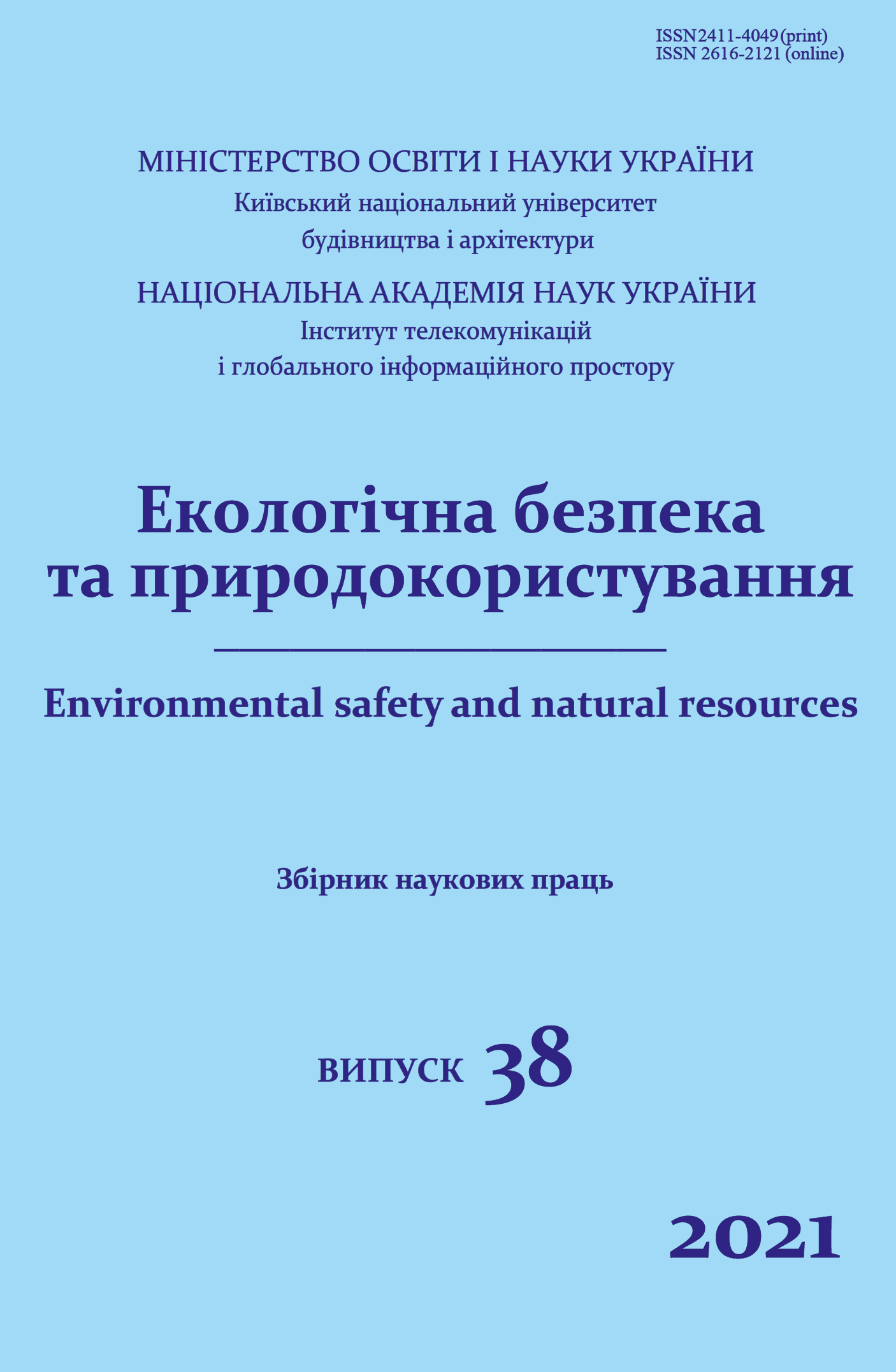Assessment of spent batteries streams in Ukraine
DOI:
https://doi.org/10.32347/2411-4049.2021.2.55-63Keywords:
batteries, waste, spent batteries, waste management, mass balanceAbstract
The goal of this study is the analysis of quantitative parameters and dynamics of spent batteries generation in Ukraine and mass balance assessment of their streams. The assessment used statistical data from international trade organizations and the State Statistics Service of Ukraine on the number of produced, imported, exported batteries, and spent batteries generated. Analysis of statistics on spent batteries generation in the world shows a significant difference in quantity, which is due to different ways of spent batteries management and approaches to counting. The estimated mass of batteries sold in Ukraine is about 20 thousand tons per year. The weight of household batteries (excluding car batteries) is estimated as 4.5-7 thousand tons per year (110-170 grams per year per person) and corresponds to the data of some EU countries. Among household batteries, alkaline and lithium-ion batteries are the most common. Study of batteries quantity in the waste has shown a significant data divergence between the expected mass of batteries in the waste and official statistics. This is probably due to the low efficiency of the waste accounting system. In recent years, there is a trend of reducing the mass of batteries placed on the market and reducing their share in the waste (but such trends are not a case for household batteries). According to unofficial data, the weight of the collected spent household batteries is 2-3 tons per year or 0,05-0,08 grams per year per 1 person. The level of spent batteries collection (including car batteries) is estimated at 19%, and household batteries – only 0.1% that is much lower than in the EU countries. About 75–80% of spent batteries (99% of spent household batteries) are not accounted in waste streams. Besides, batteries in the waste of electrical and electronic equipment remain unaccounted.
The scientific novelty of the study is the development of mass balance of spent batteries in Ukraine, which will ensure more efficient management of their flows. The practical value of the paper includes assessment of spent batteries volume in Ukraine for further analysis of the possibilities of their recycling.
References
Ishchenko, V., Pohrebennyk, V., Kochan, R., Mitryasova, O., & Zawislak, S. (2019). Assessment of hazardous household waste generation in Eastern Europe. In 19th International Multidisciplinary Scientific Geoconference SGEM 2019, June 30 – July 6, 2019, vol. 19, iss. 6, 559-566.
Ishchenko, V., Pohrebennyk, V., Kozak, Y., Kochanek, A., & Politylo, R. (2016). Assessment of batteries influence on living organisms by bioindication method. In 16th International Multidisciplinary Geoconference SGEM 2016. Book 5. Ecology, Economics, Education and Legislation. SGEM2016 Conference Proceedings, June 28 – July 6, 2016, vol. II, 85-92.
Ishchenko, V., Pohrebennyk, V., Borowik, B., Falat, P., & Shaikhanova, A. (2018). Toxic substances in hazardous household waste. In International Multidisciplinary Scientific Geoconference SGEM 2018, vol. 18, is. 4.2. SGEM2018 Conference Proceedings, July 2 – July 8, 223-230.
Rogulski, Z., & Czerwiński, A. (2006). Used batteries collection and recycling in Poland. Journal of Power Sources, 159 (1), 454-458.
European Portable Battery Association (2013). The collection of waste portable batteries in Europe in view of the achievability of the collection targets set by Batteries Directive 2006/66/EC. European Portable Battery Association, Brussels (updated in 2020).
Bigum, M., Petersen, C., Christensen, T. H., & Scheutz, C. (2013). WEEE and portable batteries in residual household waste: Quantification and characterisation of misplaced waste. Waste management, 33 (11), 2372-2380.
Barrett, H. A., Ferraro, A., Burnette, C., Meyer, A., & Krekeler, M. P. (2012). An investigation of heavy metal content from disposable batteries of non-US origin from Butler County, Ohio: An environmental assessment of a segment of a waste stream. Journal of Power Sources, 206, 414-420.
Recknagel, S., Radant, H., & Kohlmeyer, R. (2014). Survey of mercury, cadmium and lead content of household batteries. Waste management, 34 (1), 156-161.
UN Comtrade Database. Retrieved from: https://comtrade.un.org/data/
Dimitrakakis, E., Janz, A., Bilitewski, B., & Gidarakos, E. (2009). Small WEEE: determining recyclables and hazardous substances in plastics. Journal of hazardous materials, 161 (2-3), 913-919.
Gu, B., Zhu, W., Wang, H., Zhang, R., Liu, M., Chen, Y., Wu, Y., Yang, X., He, S., Cheng, R., Yang, J. & Bi, J. (2014). Household hazardous waste quantification, characterization and management in China’s cities: A case study of Suzhou. Waste management, 34 (11), 2414-2423.
Terazono, A., Oguchi, M., Iino, S., & Mogi, S. (2015). Battery collection in municipal waste management in Japan: challenges for hazardous substance control and safety. Waste Management, 39, 246-257.
Utvorennia vidkhodiv za klasyfikatsiinymy uhrupovanniamy derzhavnoho klasyfikatora vidkhodiv. Derzhavna sluzhba statystyky Ukrainy. Retrieved from: http://www.ukrstat.gov.ua/ (in Ukrainian)
Ishchenko, V., Pohrebennyk, V., Kochanek, A., & Hlavatska, L. (2019). Waste electrical and electronic equipment management in Ukraine. In Proceedings of International Conference on Geosciences, March 26-29, 2019, Athens, Greece, book 3, vol. 1, 197-204.
Directive 2006/66/EC of the European Parliament and of the Council of 6th September 2006 on batteries and accumulators and waste batteries and accumulators and repealing Directive 91/157/EEC OJ 266/1.
Downloads
Published
How to Cite
Issue
Section
License
Copyright (c) 2021 Vitalii Ishchenko

This work is licensed under a Creative Commons Attribution 4.0 International License.
The journal «Environmental safety and natural resources» works under Creative Commons Attribution 4.0 International (CC BY 4.0).
The licensing policy is compatible with the overwhelming majority of open access and archiving policies.

